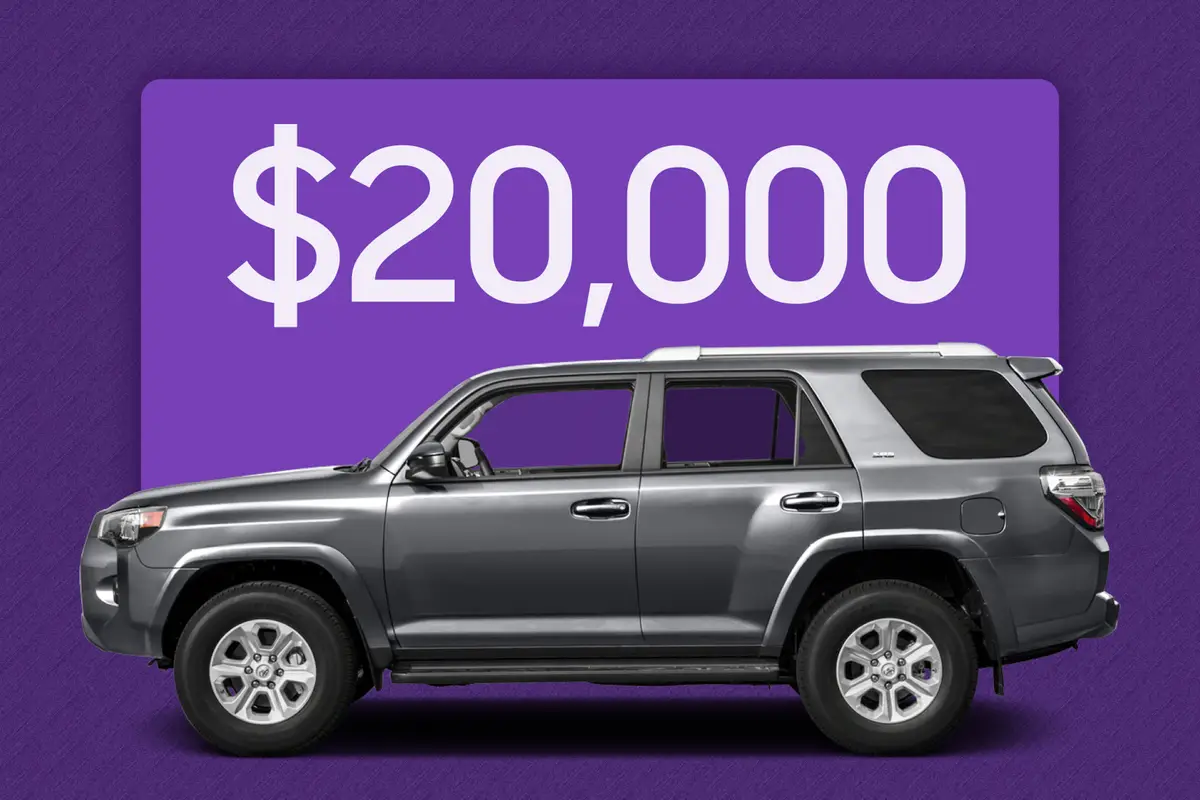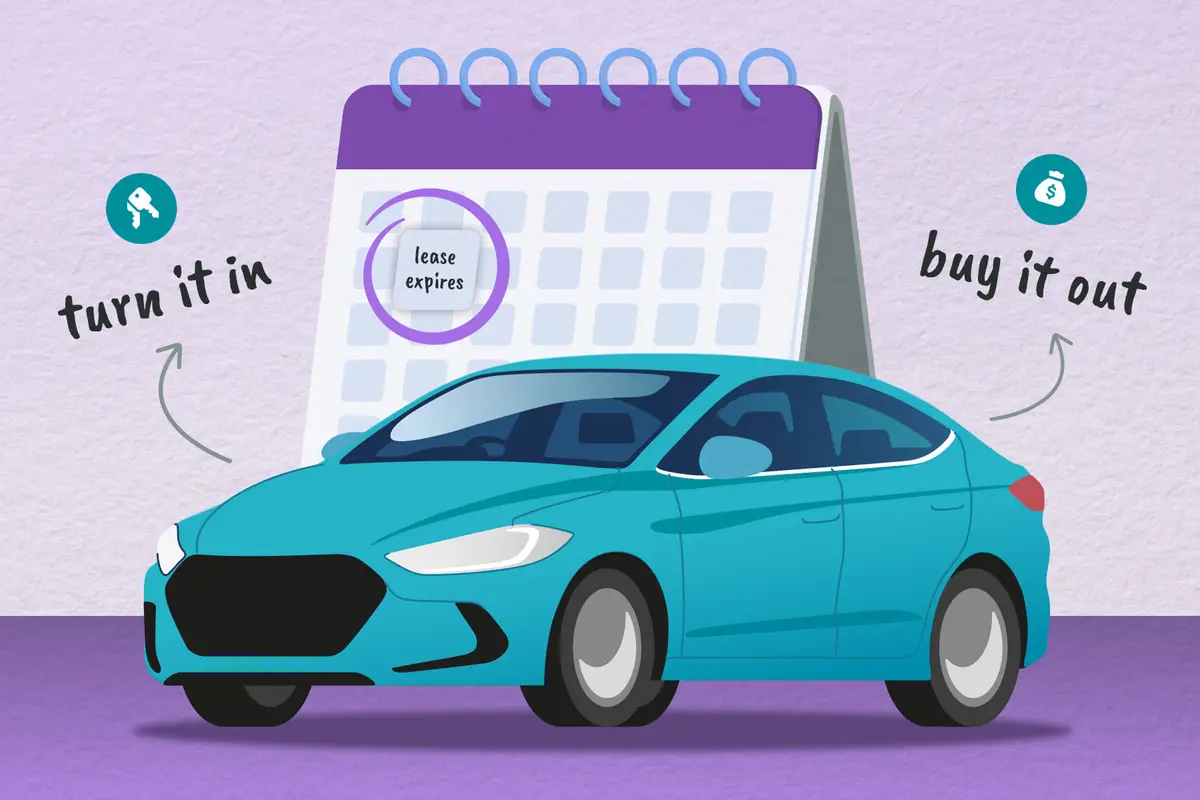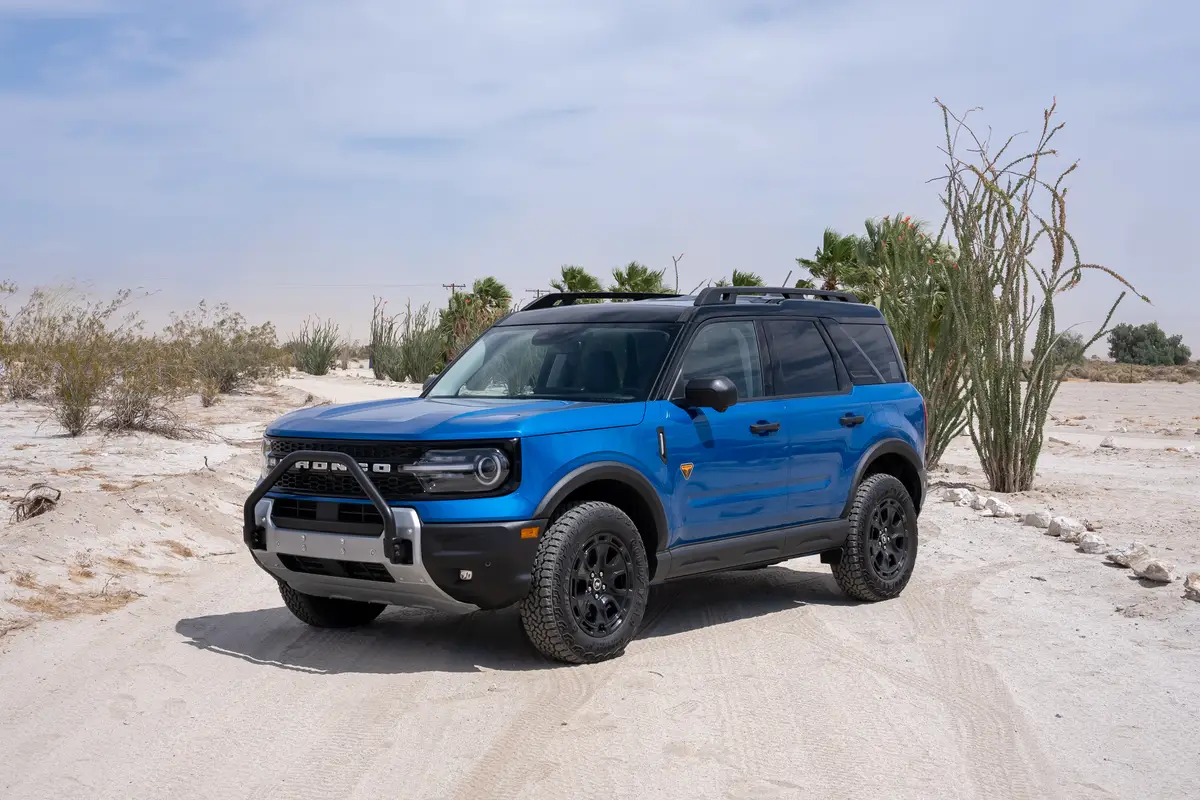Tow Test Review: 2011 Ford F-250 Super Duty, Part 1
Words and Photos by John Stewart for PickupTrucks.com
Page: [1] [2]
We’ve been around long enough to know that the controlled towing tests manufacturers arrange at new truck introductions are incomplete. They serve as useful demonstrations of engine power, but there are other variables that can’t be explored.
For those reasons, we wanted to examine the 2011 F-250 Super Duty as we towed on our own real-world terms. That included towing through city traffic, stop-and-go situations on hot afternoons, up and down highway passes, through gusty crosswinds and dicing with truckers on the superhighway. It also allowed us to look at transmission and oil temps and gather mileage data, both while towing and when the truck was empty.
To focus our impressions, we came up with a rating system that we’ll share with you in a moment. First, let’s look at what we were driving.
The Truck
Our test unit was a 2011 F-250 King Ranch crew cab with a 156-inch wheelbase and 6.75-foot box. It was powered by the all-new — and much anticipated — 6.7-liter diesel V-8, backed by the new six-speed 6R140 TorqShift automatic transmission.
Because it was a 4×4, it had the mono beam/coil spring front suspension that’s shared with the F-350, and a leaf-spring rear live axle with a locking differential. It also had front tow hooks and manual locking hubs. The four-wheel-drive system is controlled with a dial on the dash. As a rule, two-wheel-drive pickups will have higher tow ratings than 4x4s (because of the lower hardware weight) but in this case, both two-wheel-drive and 4×4 crew cabs can handle as much as 14,000 pounds with a properly configured conventional hitch.
Figuring out what your tow vehicle can actually haul is always an interesting exercise. Actual capability depends on a number of factors, and it’s usually less than the advertised maximum. Our test unit had tallish 3.55 gears, middle-of-the-road all-purpose gearing for a four-wheel-drive diesel, providing an all-around blend of pulling power and highway fuel economy. Gears as low as 4.30 are available on Super Duty trucks, or as tall as 3.31.
Our test unit’s gross vehicle weight rating was 10,000 meaning that the spring pack can handle payloads that bring the vehicle’s total weight up to 10,000 pounds.
Referring to a Ford specifications chart describing typical single-rear-wheel Super Duty payloads and capacities, we saw our test unit should be able to handle another 2,430 pounds of people and cargo before hitting the 10,000-pound mark. However, the door sticker, located on the inside B-pillar of every pickup, is usually a more reliable indicator. The sticker said the combined weight of occupants should never exceed 1,972 pounds, a difference of some 450 pounds. Our understanding is that the door sticker accounts for the specific wheel and tire combination installed at the time of build and is more accurate.
In this case, we had 20-inch wheels with E-rated LT275/65R20 tires, designed to be inflated to 65 pounds per square inch for low rolling resistance under load on the highway. These are the largest wheels available, which could explain the difference between the weight capacities on the generic specifications chart and the door sticker. Generally, smaller steel wheels can carry more weight than larger cast alloy wheels, a sobering consideration for new-truck buyers who like to upsize wheels for styling reasons. By adding oversize aftermarket wheels and lower-profile tires, towing and hauling ratings can be significantly compromised.
This bit of research assured us that this truck could tow, with a weight-distributing hitch, at least 10,000 pounds and possibly as much as 14,000. In either case, we had a wide margin of safety.
The Trailer
Our test load was a 23-foot Airstream trailer, a truly magnificent high-end, all-aluminum RV with tandem axle. When we hooked it up, it had a full load of water and half-full holding tanks, adding at least 500 pounds to the dry weight. Inside was food, silverware, bedding, bags of clothing for three and camping gear, among other things. We did not weigh the rig, but we estimated the trailer’s wet weight at 5,200 pounds minimum. Add to that three people, their personal gear and a pet, and we were looking at roughly 6,000 pounds, ready for a weekend of camping.
We have to admit that this load, potentially a challenge for a half-ton truck, did not seriously tax the Super Duty. We hoped for a heavier load, but Airstream makes a super-light trailer.
The Score Card
Our formula for a great tow vehicle would be defined by six characteristics. They are all important, but some needs might be more important than others. You could make up your own, but our strictly arbitrary ratings system would look something like this:
1) Reliable engine power and torque: 25 points
2) Lockup transmission with gearing for pulling power and mileage: 20 points
3) Great brakes and brake control systems: 20 points
4) A roomy, comfortable interior for the long, slow haul: 15 points
5) Factory towing gear: 15 points
6) Ride and handling, loaded versus unloaded: 10 points
Guys who tow all the time might assign different values, based on what they do and the problems they face, and we think that would be entirely legit. But we think anyone who has towed much will agree that these requirements for a great tow rig are all very real. Based on our driving experience with the new Super Duty, and the framework suggested above, we offer the following impressions.
1. Engine Power and Torque
A great diesel must be strong, powerful, built to last and, now, incredibly clean as well. The new 6.7-liter diesel seems to fit the bill.
It’s built based on a very strong and light compacted graphite iron block with 13-quart oil capacity to reduce the possibility of oil contamination. Like a lot of clean diesels, very high-pressure common rail injection and ultrafast piezo injectors enhance efficiency and control combustion byproducts. The engine produces 390 horsepower at just 2,800 rpm and 735 pounds-feet of torque at 1,600 rpm, significantly more than Dodge’s Cummins straight six, and just a little less than GM’s soon-to-arrive 6.6-liter LML Duramax.
While engine rating numbers can be compared and debated ad nauseum, in the real world it’s all very simple. Bottom line, there is no lack of engine power under the hood of the Super Duty.
Power and response
The next-generation Super Duty diesel engine is different in another conspicuous way. It uses inboard exhaust architecture, meaning that the exhaust manifolds reside in the valley of the engine, while the intake is outboard of the engine. The cylinder heads flow gas in the opposite direction of standard V-8 engine architecture.
This unusual layout — Ford calls it unique; the competition calls it tortured —achieves the goal of placing the turbo close to the exhaust flow where it’s hottest, encouraging quicker turbo spool-up. And it works. The turbo itself is indisputably state of the art, with a double-sided compressor wheel that allows for quicker throttle response and very good compression at higher rpm. Throttle response is direct and linear, with no appreciable lag, steadily building power to 3,000 rpm and beyond. At one point, as we approached a steep highway pass towing at 55 mph, we rolled on the throttle in an imaginary uphill passing situation. The transmission kicked down, and the next thing we knew, we were looking at 85 mph. It’s inevitable that someone will find the performance ceiling of the new 6.7-liter diesel powertrain, but it will take a pretty big load to do it. Configurations are available to tow up to 24,400 pounds.
Emissions
The 6.7-liter is the newest of the next generation of “clean diesel” engines that meet very strict emissions standards. It uses selective catalytic reduction to run clean. The system adds a certain amount of operating cost by having to replenish a separate heated urea tank about every 6,000 miles. Still, it’s a stunning achievement.
At one point, our neighbor with the big RV and 7.3-liter diesel leaned in our window to admire the truck. After 10 minutes, he was surprised to learn it was a diesel. There is zero smoke, zero smell and practically no noise. Urea injection sounds like it might be messy, but in many applications, SCR has proved to be a mileage-enhancing system. Under the circumstances, Ford’s emissions strategy appears appropriate and well executed. The fact that the engine tolerates biodiesel blends up to B20 is another impressive advancement.
Yes, we love the new engine. But long-term durability is also a requirement, and here, while we are optimistic, we are a little reluctant to make predictions.Diesel engines are worked hard, and sometimes they’re asked to do the impossible by owners who overestimate their capacity to absorb punishment.
Nevertheless, fail-safe engineering and predictable long-term maintenance costs are an expected part of the manufacturer/customer relationship, especially in an engine that commands a price of $7,835. We don’t want to beat a dead horse, but previous Super Duty Navistar diesels have been controversial. Even the 6.4-liter, another clean-sheet-of-paper engine designed for durability and performance, was sufficiently disappointing to prompt Ford to sever its relationship with Navistar and develop its next diesel in-house.
Cut to 2011, and we can say the 6.7-liter Scorpion looks like a great diesel power plant. It comes with a five-year, 100,000-mile warranty. But the truth is, only time will tell whether this diesel is as reliable and trouble-free as a great diesel engine should be. It would seem to be designed right, built right, and Ford’s commitment to renewed credibility with its diesel customers seems to be sincere. The smidgen of a doubt that remains prevents us from scoring the engine higher.
Our score: 23 points out of 25
2. Transmission, Pulling Power and Mileage
When a diesel engine really does, excuse the technical term, kick ass, it’s the transmission that becomes the next concern. Here, Ford’s use of one transmission for both the 6.2-liter gas engine and 6.7-liter diesel engine stands out as a break from conventional wisdom. The standard thinking is that a diesel engine’s power characteristics are so different from a gas engine’s that each should have a dedicated transmission — one built for torque, one built for horsepower.
Ford’s approach with the new 6R140 TorqShift six-speed automatic transmission was to adapt an existing architecture for heavy-duty use and to use really smart, specific programming depending on the engine.
The 6R140 has advanced digital controls to optimize the shift schedule, and an improved lock-up clutch mechanism. A long-travel, high-capacity turbine damper is used to help the torque converter to damp out the extreme low-rpm force produced by the new, more powerful diesel engine.
“This damper allows us to lug down to 900 rpm while our competitors lug to around 1,100 rpm,” Ford engineer Al Bruck said. “So we stay locked more, which means the engine can run at a lower rpm and get better fuel economy.”
Sinter-brazed gear set
The transmission also has a unique powder-metal carrier in the compound planetary gear set. The carrier consists of four pressed powder-metal components sinter-brazed together to form a rigid, power-dense structure. This is intended to make the carrier strong enough for both the diesel and gasoline engines.
“With this architecture, the new transmission can handle the enormous low-end torque produced by the new diesel engine, and also, the high speeds produced by the new gas engine,” Bruck said. “The sinter-brazed gear set enables more torque capacity and greater engine speed capability.”
The TorqShift six-speed is notable because of the transmission’s very low first gear, 3.96. (By comparison, the GM Allison 1000’s first gear is 3.10.) Because of that low first gear, we’d say it’s possible to get heavy loads moving at part throttle, without using a lot of fuel. With the transmission’s two overdrive gears, highway cruising is also fuel efficient. With this kind of transmission gearing, it’s possible to take advantage of taller axle ratios for better fuel economy without seriously compromising pulling power.
Our test unit, with 3.55 ratios in the axles, showed 1,500 rpm at 55 mph and 1,750 rpm at 60 mph. While our load was not extremely heavy, the transmission rarely needed a downshift, and it never got hot. Transmission temperatures, which we monitored using nifty digital gauges in the info center, never rose above 189 degrees even after long grades, which tells us the unit is well cooled.
Smart features
The 6R140 also has a manual mode. By shifting manually, the torque converter locks up and holds gears longer. If you forget to manage downshifts pulling up to a stop, the transmission will downshift for you.
It doesn’t apply to us, but the 6R140 transmission also has a power takeoff feature that can be used any time the engine is running. Those who plow or use the Super Duty as a tow truck would appreciate the option.
Clearly, the transmission is an asset when it comes to maximizing fuel economy.We got 14.9 mpg towing, covering 237.4 miles, mostly at speeds below 60 mph on a mix of highway, city and rural roads. With the truck empty, just loafing around town, we averaged 18.1 mpg. These are good numbers, better than prior Super Duty diesels, and for that we have to credit the transmission.
And it feels good, both towing and when the truck is empty. It knows what gear to be in 100 percent of the time, responds well to throttle input, and it shifts smoothly and cleanly. Ford engineers seem to have done their homework, and the 6R140 has great features. Be that as it may, launching a high-torque diesel without a dedicated transmission is something other manufacturers have not attempted. This is new territory, and that makes us a little nervous.
Our score: With the jury still out, we give it 17 points out of 20.
Page: [1] [2]

Featured stories




